Brad Benz, Kamila Kinyon, Eric Leake, and Eliana Schonberg
Endorsed by the University of Denver Writing Program, January 2014
I. Principles:
The purpose of this document is to suggest some best practice guidelines for helping DU professors work with non-native speaker (NNS) students. These practices, which adhere to the principles articulated in the Conference on College Composition and Communication’s “Statement on Second Language Writing and Writers, ” can apply to all classes that involve writing in English, whether for formal or informal assignments, tests, or presentations. These guidelines focus on NNS, but may assist in the consideration of texts by native speakers as well.
It is helpful to begin with two general reminders:
- all DU students bring a variety of native languages and dialects to campus, including dialects of English other than written standard English;
- it can take between five and ten years to become fluent in a second language.
Moreover, because both rhetorical conventions and assumptions about originality differ across cultures, international students can enter DU classes with a different set of cultural expectations than native speakers of English. Thus, while grammatical errors can cause significant difficulties, these are by no means the only important issues to address in responding to NNS writing. It is good practice to evaluate the writing of native and NNS students by the same standards, including giving greater attention to larger rhetorical concerns.
II. Pedagogy: Assignment Construction:
Constructing effective assignments for native and non-native speakers of English can have a substantial impact on students’ success in a course. It is typical of many courses in the U.S.
to emphasize current events or other issues from an American perspective, and assignment prompts may ask international students to approach topics that are not integral to their background and goals. NNS writers may be unfamiliar with genres of writing that are familiar to native speakers of English. Instructors should consider adjusting their assignments to include open-ended topics or topics of cross-cultural interest.
III. Pedagogy: Guidelines for Reading Responding to NNS Papers:
- Read the paper in full before commenting, to see how it is organized on its own terms. Different cultures value different rhetorical strategies. (See Appendix A for more detail on cultural differences in rhetorical construction.)
- Remember that NNS writers’ texts typically employ a simpler style, with less variety in sentence construction, with shorter words and less specific words, and generally less variety in terms of diction and lexical sophistication.
- Begin your commenting with larger issues, such as focus, argument, development, and organization.
- Consider first the rhetorical and communicative possibilities of a statement before determining error, and consider whether commenting on minor grammatical and stylistic issues may be secondary concerns.
- Do not correct all the errors in a paper. Rather, identify recurring grammatical patterns in the text, and give one or two examples. Then ask the student to locate and correct other examples of the same problem. It is important to get NNS students to fix their own mistakes. (See Appendix D for Common Errors.)
- When faced with a possibility of plagiarism, keep in mind cultural differences regarding authority and attribution. (See Appendix C on Plagiarism and Culture.)
- If the paper has multiple errors, prioritize feedback. Make sure to focus on those errors that most interfere with meaning. For example, sentence structure is central for making the meaning clear to a reader. The student should learn how to make these corrections first, before moving on to such issues as article usage.
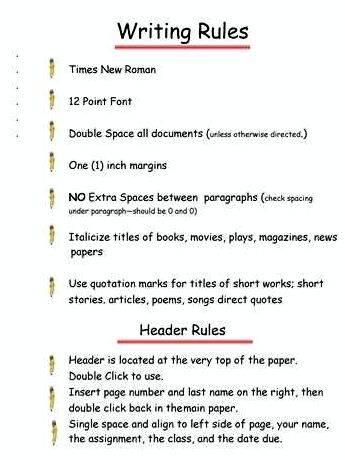
IV. Pedagogy: Assessment and Grading:
There exist differing views regarding assessment and grading of international students in courses that also contain native speakers. Instructors and departments may choose to establish guidelines for assessment of international students’ work that, in relation to goals for native speakers, are consistent in terms of content goals, but differ in terms of language use.
A. In-Class Writing and In-Class Essay Exams
The composing process for NNS students is more laborious than it is for native speakers. As a result, their texts are often shorter than those of native speakers, especially in a two-hour class session. NNS students naturally need more time than native speakers for completing in-class writing and in-class exams. Essay exams may pose a particular problem. Instructors should do what they can to accommodate NNS students’ needs.
B. Consideration of Diversity in Evaluating the Final Product
In courses across the disciplines, instructors must use their best judgment to find grading practices that are fair to all students while showing understanding for the differing background of international students. As recommended by the CCCC “Statement on Second Language Writing and Writers,” the evaluation of second language texts should take into consideration various aspects of writing, such as general effectiveness, topic development, organization, grammar, and word choice.
C. Embedding Assessment and Grading in a Process Approach
Instructors can better understand the assumptions and knowledge that international students bring to their texts by considering different stages of these students’ writing process. Reflective commentary, for example, may give instructors insight into the genre knowledge and rhetorical knowledge that students bring to their texts. In providing revision-oriented comments, instructors can take on the role of helpful readers as opposed to the role of evaluators and correctors of student texts. The role of evaluator is more useful at a later stage, when students have had the chance to sufficiently work through their ideas.
Appendix: Cultural Differences, Plagiarism, Editing
A. Cultural Differences in Rhetorical Conventions:
There are varying methods of essay development across cultures, as each language and culture has rhetorical conventions unique to it. For example, not all cultures share the American emphasis on thesis statements, linear development, or the summing up through a conclusion. Students from some cultural traditions may tend to approach a topic from a variety of viewpoints in order to examine it indirectly and may also feel a greater freedom to digress or to introduce extraneous material. Cultural differences may be manifested in some of the following ways:
1. In a paper’s organization (such as inductive or deductive reasoning patterns)
2. In a preference for a particular sentence style
3. In the forms of address or register (issues of formality)
4. In apparent lack of cohesive ties
5. In the amount and type of information that is included (such as the balance between general points and supporting information)
B. There are also differing conventions in speech styles across cultures. As a result, NNS students’ class participation may affect the classroom dynamic. Whatever culture NNS students come from, be aware that speech styles differ, and take this into account when engaging NNS students in classroom discussions.
C. Plagiarism and Culture:
- In the United States, ideas about plagiarism are driven by a particular understanding of what it means to write—including a value on individuality, independence, and notions of “authentic voice.” Originality is another important concept in Western education systems.
- Other traditions tend to emphasize close allegiance to a few acknowledged authorities, leading to convergence of perspective and social harmony.
- It is useful to address the issue of plagiarism gently but explicitly with international students, whether during student conferences or office hours or through additional commenting on student papers. International students at DU are told that if they plagiarize, they could lose their student visa, so they’re often very afraid of the word “plagiarism” even if they don’t know how to not plagiarize.
- Paraphrasing is an especially difficult skill as it requires the linguistic resources to rephrase original wording to suit a new need and context.
- How to consult with students about using sources:
- It is useful to look at a student’s sources side by side with her papers.
- See if the writer has done the following:
- Does the writer do a good job of weaving source information into the paper?
- Does she vary the way that she uses sources, drawing on summary, paraphrase, and direct quotation?
- Does he choose appropriate times to use direct quotes in his paper, or does he overuse them, failing to make an original argument in the paper?
- Instructors should be mindful of the following recommendation, articulated in the CCCC “Statement on Second Language Writing and Writers”: “We advocate that instructors take extra care when suspecting a second language writer of plagiarism, and take into consideration the student’s cultural background, level of experience with North American educational systems, and confidence level for writing in English.”
D. Common Errors:
- Subject-verb agreement
- Verb tense
- Verb form
- Singular/plural noun endings
- Word form
- Sentence structure
E. Idioms – turns of phrase, metaphors, slang, etc. It is very hard for NNS students to learn idioms. There are no structured grammar rules for them; rather, they are idiosyncratic and heavily culturally dependent, so it takes years of cultural immersion to learn most of them. ESL speakers who have spent years in the US and are otherwise fluent in English still often have trouble with them. Consequently, idioms should be a low priority when grading a paper unless the idiom is a major theme in the paper or the paper is nearly free of errors.
F. Other common grammatical errors that can also be considered idiomatic:
- Prepositions – Some prepositions make logical sense but others don’t. For instance, “on the driveway” makes more sense than “in the driveway.” Prepositions like this just take time in cultural immersion to learn since there is no real grammatical rule.
- Some articles – “a” and “the.” It’s quite common for NNS students to drop articles, especially if they don’t exist in a student’s native language. However, some articles follow grammatical rules and patterns while others do not. So, it is worth considering articles a low priority, especially if the dropped article does not follow a formal rule or grammatical pattern.
- Some count and non-count nouns – Count nouns usually follow clear patterns and are easily taught. However, non-count nouns often do not. For instance, how do you explain that “money” is non-count (words like data, rice, glue, etc) and has no plural form? However, a word like “cat” is easily explained as a count noun. Again, those nouns that are not easily explained should take low priority. Only focus on them if the paper is otherwise nearly free of errors. Because there is often no clear rule or pattern to them, non-count nouns often have to be memorized by rote or simply learned through immersion.
Creating a robust culture of writing on the DU campus, the Writing Program helps students and faculty develop complex writing abilities needed in contemporary academic, professional, and civic life.
The nationally recognized program provides a national model for colleges and universities seeking exemplary practices in teaching writing.
University Writing Program
Anderson Academic Commons 282
2150 E. Evans Ave.
Denver, CO 80210
writing@du.edu
303-871-7448
Writing Center
Shopneck Writing Center
Anderson Academic Commons 280
wrc@du.edu
303-871-7456
Monday: 9am – 9pm
Tuesday: 9am – 8pm
Wednesday: 9am – 9pm
Thursday: 9am – 7pm
Friday: 10am- 4pm
Sunday: 4pm – 8pm
The last day of fall quarter hours will be Friday 11/18.
We will have limited hours for finals on Sunday 11/20 and Monday 11/21.
We will be closed from Tuesday 11/22 through Sunday 11/27.
Individual Course descriptions are available on this PDF.
2016 University of Denver. All rights reserved. Privacy. The University of Denver is an equal opportunity affirmative action institution.
Brad Benz, Kamila Kinyon, Eric Leake, and Eliana Schonberg
Endorsed by the University of Denver Writing Program, January 2014
I. Principles:
The purpose of this document is to suggest some best practice guidelines for helping DU professors work with non-native speaker (NNS) students. These practices, which adhere to the principles articulated in the Conference on College Composition and Communication’s “Statement on Second Language Writing and Writers, ” can apply to all classes that involve writing in English, whether for formal or informal assignments, tests, or presentations. These guidelines focus on NNS, but may assist in the consideration of texts by native speakers as well.
It is helpful to begin with two general reminders:
- all DU students bring a variety of native languages and dialects to campus, including dialects of English other than written standard English;
- it can take between five and ten years to become fluent in a second language.
Moreover, because both rhetorical conventions and assumptions about originality differ across cultures, international students can enter DU classes with a different set of cultural expectations than native speakers of English. Thus, while grammatical errors can cause significant difficulties, these are by no means the only important issues to address in responding to NNS writing. It is good practice to evaluate the writing of native and NNS students by the same standards, including giving greater attention to larger rhetorical concerns.
II. Pedagogy: Assignment Construction:
Constructing effective assignments for native and non-native speakers of English can have a substantial impact on students’ success in a course. It is typical of many courses in the U.S. to emphasize current events or other issues from an American perspective, and assignment prompts may ask international students to approach topics that are not integral to their background and goals. NNS writers may be unfamiliar with genres of writing that are familiar to native speakers of English. Instructors should consider adjusting their assignments to include open-ended topics or topics of cross-cultural interest.
III. Pedagogy: Guidelines for Reading Responding to NNS Papers:
- Read the paper in full before commenting, to see how it is organized on its own terms. Different cultures value different rhetorical strategies. (See Appendix A for more detail on cultural differences in rhetorical construction.)
- Remember that NNS writers’ texts typically employ a simpler style, with less variety in sentence construction, with shorter words and less specific words, and generally less variety in terms of diction and lexical sophistication.
- Begin your commenting with larger issues, such as focus, argument, development, and organization.
- Consider first the rhetorical and communicative possibilities of a statement before determining error, and consider whether commenting on minor grammatical and stylistic issues may be secondary concerns.
- Do not correct all the errors in a paper. Rather, identify recurring grammatical patterns in the text, and give one or two examples. Then ask the student to locate and correct other examples of the same problem. It is important to get NNS students to fix their own mistakes. (See Appendix D for Common Errors.)
- When faced with a possibility of plagiarism, keep in mind cultural differences regarding authority and attribution. (See Appendix C on Plagiarism and Culture.)
- If the paper has multiple errors, prioritize feedback. Make sure to focus on those errors that most interfere with meaning. For example, sentence structure is central for making the meaning clear to a reader. The student should learn how to make these corrections first, before moving on to such issues as article usage.
IV. Pedagogy: Assessment and Grading:
There exist differing views regarding assessment and grading of international students in courses that also contain native speakers. Instructors and departments may choose to establish guidelines for assessment of international students’ work that, in relation to goals for native speakers, are consistent in terms of content goals, but differ in terms of language use.
A. In-Class Writing and In-Class Essay Exams
The composing process for NNS students is more laborious than it is for native speakers. As a result, their texts are often shorter than those of native speakers, especially in a two-hour class session. NNS students naturally need more time than native speakers for completing in-class writing and in-class exams. Essay exams may pose a particular problem. Instructors should do what they can to accommodate NNS students’ needs.
B. Consideration of Diversity in Evaluating the Final Product
In courses across the disciplines, instructors must use their best judgment to find grading practices that are fair to all students while showing understanding for the differing background of international students. As recommended by the CCCC “Statement on Second Language Writing and Writers,” the evaluation of second language texts should take into consideration various aspects of writing, such as general effectiveness, topic development, organization, grammar, and word choice.
C. Embedding Assessment and Grading in a Process Approach
Instructors can better understand the assumptions and knowledge that international students bring to their texts by considering different stages of these students’ writing process. Reflective commentary, for example, may give instructors insight into the genre knowledge and rhetorical knowledge that students bring to their texts. In providing revision-oriented comments, instructors can take on the role of helpful readers as opposed to the role of evaluators and correctors of student texts. The role of evaluator is more useful at a later stage, when students have had the chance to sufficiently work through their ideas.
Appendix: Cultural Differences, Plagiarism, Editing
A. Cultural Differences in Rhetorical Conventions:
There are varying methods of essay development across cultures, as each language and culture has rhetorical conventions unique to it. For example, not all cultures share the American emphasis on thesis statements, linear development, or the summing up through a conclusion. Students from some cultural traditions may tend to approach a topic from a variety of viewpoints in order to examine it indirectly and may also feel a greater freedom to digress or to introduce extraneous material. Cultural differences may be manifested in some of the following ways:
1. In a paper’s organization (such as inductive or deductive reasoning patterns)
2. In a preference for a particular sentence style
3. In the forms of address or register (issues of formality)
4. In apparent lack of cohesive ties
5. In the amount and type of information that is included (such as the balance between general points and supporting information)
B. There are also differing conventions in speech styles across cultures. As a result, NNS students’ class participation may affect the classroom dynamic. Whatever culture NNS students come from, be aware that speech styles differ, and take this into account when engaging NNS students in classroom discussions.
C. Plagiarism and Culture:
- In the United States, ideas about plagiarism are driven by a particular understanding of what it means to write—including a value on individuality, independence, and notions of “authentic voice.” Originality is another important concept in Western education systems.
- Other traditions tend to emphasize close allegiance to a few acknowledged authorities, leading to convergence of perspective and social harmony.
- It is useful to address the issue of plagiarism gently but explicitly with international students, whether during student conferences or office hours or through additional commenting on student papers. International students at DU are told that if they plagiarize, they could lose their student visa, so they’re often very afraid of the word “plagiarism” even if they don’t know how to not plagiarize.
- Paraphrasing is an especially difficult skill as it requires the linguistic resources to rephrase original wording to suit a new need and context.
- How to consult with students about using sources:
- It is useful to look at a student’s sources side by side with her papers.
- See if the writer has done the following:
- Does the writer do a good job of weaving source information into the paper?
- Does she vary the way that she uses sources, drawing on summary, paraphrase, and direct quotation?
- Does he choose appropriate times to use direct quotes in his paper, or does he overuse them, failing to make an original argument in the paper?
- Instructors should be mindful of the following recommendation, articulated in the CCCC “Statement on Second Language Writing and Writers”: “We advocate that instructors take extra care when suspecting a second language writer of plagiarism, and take into consideration the student’s cultural background, level of experience with North American educational systems, and confidence level for writing in English.”
D. Common Errors:
- Subject-verb agreement
- Verb tense
- Verb form
- Singular/plural noun endings
- Word form
- Sentence structure
E. Idioms – turns of phrase, metaphors, slang, etc. It is very hard for NNS students to learn idioms. There are no structured grammar rules for them; rather, they are idiosyncratic and heavily culturally dependent, so it takes years of cultural immersion to learn most of them. ESL speakers who have spent years in the US and are otherwise fluent in English still often have trouble with them. Consequently, idioms should be a low priority when grading a paper unless the idiom is a major theme in the paper or the paper is nearly free of errors.
F. Other common grammatical errors that can also be considered idiomatic:
- Prepositions – Some prepositions make logical sense but others don’t. For instance, “on the driveway” makes more sense than “in the driveway.” Prepositions like this just take time in cultural immersion to learn since there is no real grammatical rule.
- Some articles – “a” and “the.” It’s quite common for NNS students to drop articles, especially if they don’t exist in a student’s native language. However, some articles follow grammatical rules and patterns while others do not. So, it is worth considering articles a low priority, especially if the dropped article does not follow a formal rule or grammatical pattern.
- Some count and non-count nouns – Count nouns usually follow clear patterns and are easily taught. However, non-count nouns often do not. For instance, how do you explain that “money” is non-count (words like data, rice, glue, etc) and has no plural form? However, a word like “cat” is easily explained as a count noun. Again, those nouns that are not easily explained should take low priority. Only focus on them if the paper is otherwise nearly free of errors. Because there is often no clear rule or pattern to them, non-count nouns often have to be memorized by rote or simply learned through immersion.
Creating a robust culture of writing on the DU campus, the Writing Program helps students and faculty develop complex writing abilities needed in contemporary academic, professional, and civic life.
The nationally recognized program provides a national model for colleges and universities seeking exemplary practices in teaching writing.
University Writing Program
Anderson Academic Commons 282
2150 E. Evans Ave.
Denver, CO 80210
writing@du.edu
303-871-7448
Writing Center
Shopneck Writing Center
Anderson Academic Commons 280
wrc@du.edu
303-871-7456
Monday: 9am – 9pm
Tuesday: 9am – 8pm
Wednesday: 9am – 9pm
Thursday: 9am – 7pm
Friday: 10am- 4pm
Sunday: 4pm – 8pm
The last day of fall quarter hours will be Friday 11/18.
We will have limited hours for finals on Sunday 11/20 and Monday 11/21.
We will be closed from Tuesday 11/22 through Sunday 11/27.
2016 University of Denver. All rights reserved. Privacy. The University of Denver is an equal opportunity affirmative action institution.




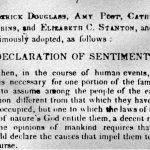 Declaration of sentiments and resolutions thesis proposal
Declaration of sentiments and resolutions thesis proposal Thesis writing phd comics coffee
Thesis writing phd comics coffee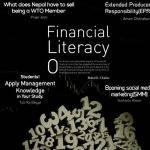 Subash khanal master thesis proposal
Subash khanal master thesis proposal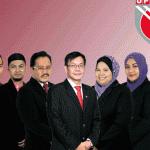 Tajul islam phd thesis writing
Tajul islam phd thesis writing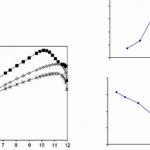 Vortex tube pdf thesis proposal
Vortex tube pdf thesis proposal






